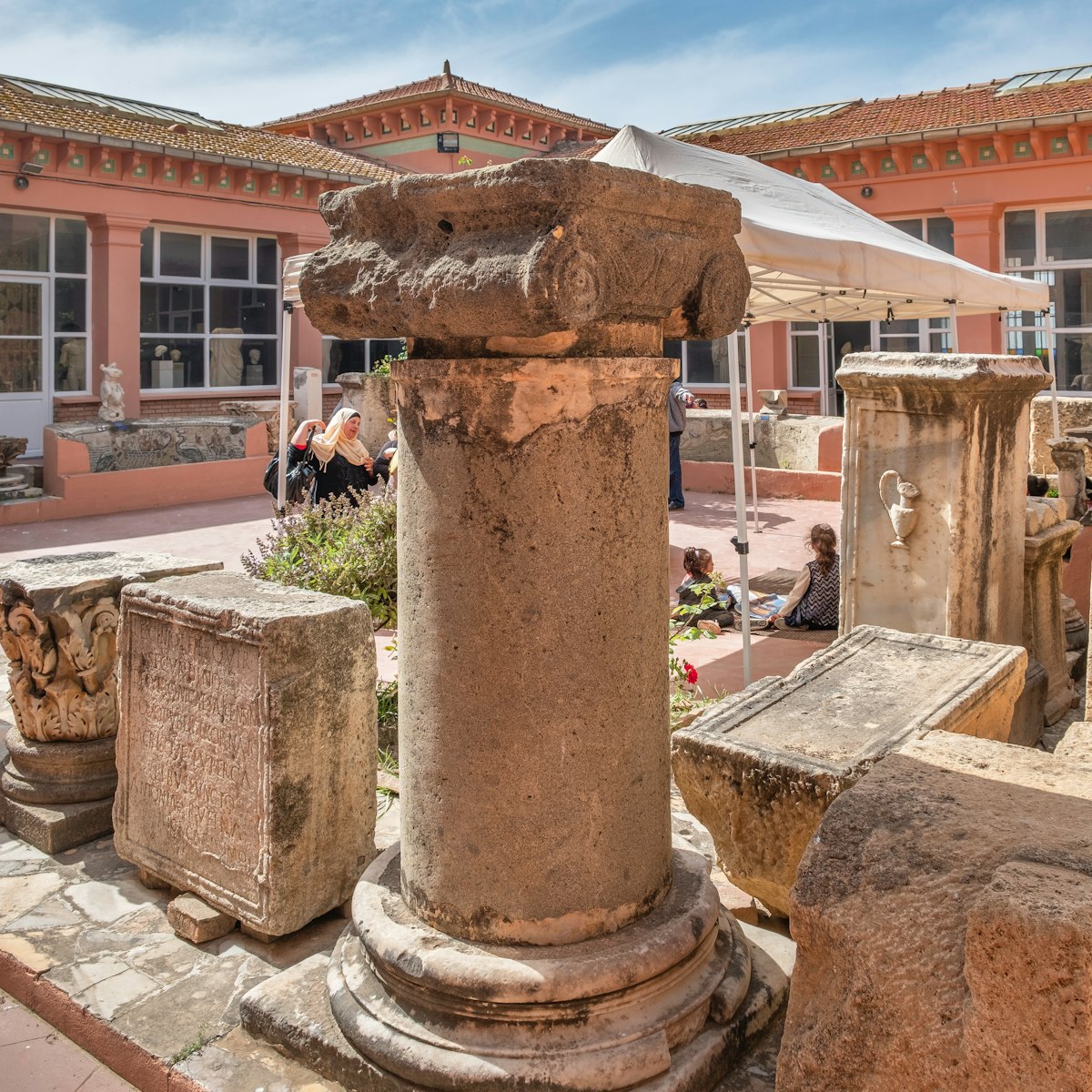The founders of Tipasa (as Tipaza was known during the Roman era) obviously had an eye for aesthetics. The town rolls gently downhill through pine trees to a small beach and a blue silvered sea. It's this natural beauty, as much as the honey-toned sandstone walls, the amphitheatre where naval battles were re-enacted and the remnants of markets where fish were gutted and sold, that really makes Tipasa stand out as one of North Africa's finest Roman sites.
After entering the site you come almost immediately to an amphitheatre, which would have been one of the main entertainment centres of the ancient town. There isn’t much left of the surrounding structure, but the oval walls of the arena still describe the area where, in the 4th and 5th centuries, gladiator fights and naval battles were held. Just beyond the amphitheatre the path leads to to the central point of the town, where the two main streets, the paved decumanus and cardo maximus, join. Follow the decumanus to the left and you will come to the other place of entertainment, the theatre. This is also much ruined, but the props that supported the stage are there, as is the slope that was once covered with seating blocks. North of here – head straight for the sea – there is an area developed by Christians. The religious complex here includes two basilica, tombs and baths, all of which can be easily identified. The grand basilica was the largest Christian building in North Africa when it was finished in the 4th century.
Return back along the shoreline. The middle of this cove was devoted to large villas and bath complexes, some of which still have mosaics on the floors. The house at the centre, on the cardo maximus, was the Villa of Frescoes, an unusually large house of 1000 sq metres built at the height of Tipasa’s prosperity, in the 2nd century AD.

